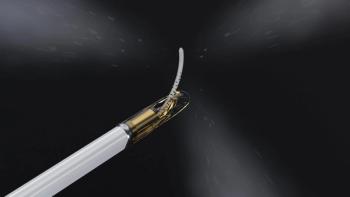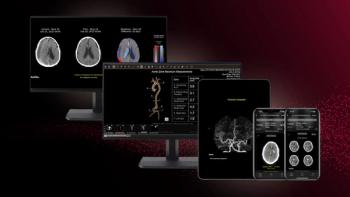
Diagnostic Imaging May Be Safe for Pregnant Women
Diagnostic imaging procedures are sometimes necessary for pregnant women, and can be done safely in some cases.
Some radiologic imaging can be safe for pregnant women who have sustained traumatic injuries, according to a review article published in the
Researchers from the Thomas Jefferson University in Philadelphia, PA, and the Garden State OB/GYN Associates in Voorhees, NJ reviewed the diagnostic dilemma that confronts emergency room physicians when pregnant women present with traumatic injuries that require diagnostic imaging.
It is known that ionizing radiation can be harmful to the fetus, particularly in the early stages of pregnancy. Ionizing radiation doses of more than 100 mGy in the first trimester of pregnancy may lead to spontaneous abortion, malformation, and mental retardation. Plain radiographs of the extremities and cervical spine expose the fetus to minimal doses of radiation of less than 10 mGy. Other diagnostic studies, such as CT of the pelvis, emit significantly higher exposure doses of approximately 35 mGy. There do not appear to be teratogenic risks after 17 weeks of pregnancy from imaging at diagnostic doses.[[{"type":"media","view_mode":"media_crop","fid":"41065","attributes":{"alt":"","class":"media-image media-image-right","id":"media_crop_295690095863","media_crop_h":"0","media_crop_image_style":"-1","media_crop_instance":"4281","media_crop_rotate":"0","media_crop_scale_h":"0","media_crop_scale_w":"0","media_crop_w":"0","media_crop_x":"0","media_crop_y":"0","style":"float: right;","title":"©nattanan726/Shutterstock.com","typeof":"foaf:Image"}}]]
“Women should be counseled that radiation exposure from a single diagnostic procedure does not result in harmful fetal effects,” the authors wrote. “Specifically, exposure to less than 50 mGy (5 rad) has not been associated with an increase in fetal anomalies or pregnancy loss. Concern about possible effects of high-dose ionizing radiation exposure should not prevent indicated diagnostic radiographic procedures from being performed on a pregnant woman.”
Computed tomography can be performed so that fetal radiation exposure is limited through decreasing the voltage and current, increasing the pitch, widening the beam collimation, and/or limiting the scanned areas, the authors noted.
Of course, other imaging procedures, such as ultrasound and MRI – which are not associated with any known fetal effects – can be performed instead, they should be considered before radiography or CT.
Newsletter
Stay at the forefront of radiology with the Diagnostic Imaging newsletter, delivering the latest news, clinical insights, and imaging advancements for today’s radiologists.




























